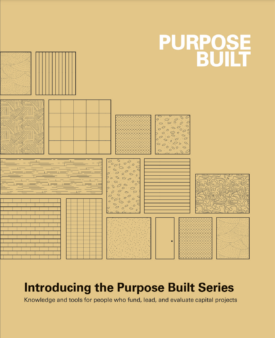Purpose Built: Knowledge and tools for people who fund, lead, and evaluate capital projects
Resource type: Case Study
MASS Design |
The research found that the best results occur when a project is built with purpose—grounded in a clear and strategic mission that informs design decisions, with a scope that matches what its organization can afford to build, operate, and maintain. In response to study findings, MASS created Purpose Built tools and resources to help funders and nonprofits seeking to invest in, create, or evaluate capital infrastructure balance a project’s mission, design, and feasibility.
Access the full Purpose Built Series.
Tools
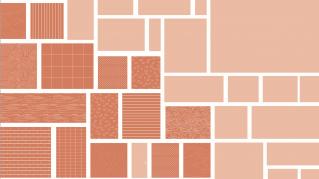
Planning for Impact
This prospective planning tool is a practical, comprehensive guide for those initiating capital projects.
Charting Capital Results
The evaluative tool is a step-by-step guide for those looking to assess completed projects.

Planning for Indigenous Impact
This practical, comprehensive tool is a guide for those initiating development projects in Indigenous communities.
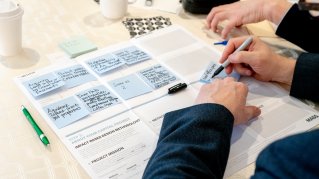
Impact-based Design Methodology
Helping organizations begin the process of identifying and clarifying the mission of their project.
Case Studies
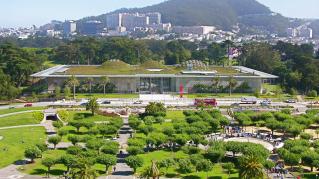
The California Academy of Sciences
This science museum designed an iconic, sustainable building to attract visitors and deepen their connection with the natural world.

Constitution Hill Precinct
This infamous site of persecution was redeveloped to preserve history, house the new Constitutional Court, and spur urban regeneration.

The Exploratorium
This experiential museum relocated to grow its audience, expand its exhibit space, and create a stronger internal organization.
Life Sciences Building, University of the Western Cape
This historically disadvantaged university designed a new facility to improve its scientific research—and create a physical landmark suitable for a world-class institution.

Marymount University Hospital and Hospice
This center applied patient-centric design and created a welcoming environment to offer high-quality and dignified care, demonstrating a model for future hospices.
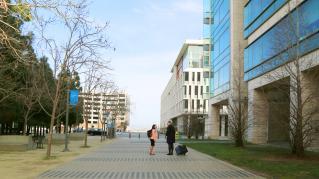
Mission Bay Campus, University of California, San Francisco
This growing institution created new research and clinical facilities to relieve crowding, expand program space, and encourage cross-disciplinary collaboration.
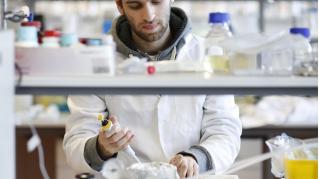
National Centre for Sensor Research, Dublin City University
This relatively young university co-located multiple disciplines to advance scientific discovery, elevate its profile as a research institution, and grow the nation’s knowledge economy.
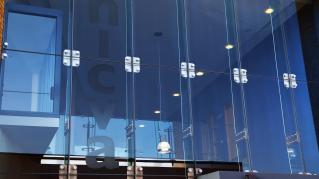
Northern Ireland Council for Voluntary Action
This membership body created a headquarters to strengthen the work and profile of voluntary organizations and contribute to the transformation of a neighborhood once divided by sectarian conflict.
Presidio Trails, Bikeways, and Overlooks Project
This urban national park developed a comprehensive network of improvements to enhance access to natural, cultural, scenic, and recreational resources and engage visitors in memorable experiences.

Science and Engineering Centre, Queensland University of Technology
This national research institution created a place for staff, students, and the wider community to connect, learn, and grow interest in STEAM education and research.
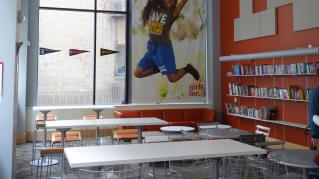
The Simpson Center for Girls
This local affiliate of a national nonprofit relocated its program center, renovating a historic space to reach and empower more underserved girls.
The Summit Bechtel Reserve
This national youth organization developed a high-adventure base to host its signature event and demonstrate its relevance in the 21st century.
Translational Research Institute
This collaboration among four institutions brought scientists together to turn leading-edge research into medical innovations and spur economic growth.
Viet Nam Health Care System
Philanthropy joined with government and created facilities to expand access to quality services and demonstrate models that would strengthen the nation’s continuum of care and prevention.
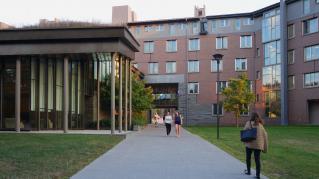
West Campus Residential Initiative, Cornell University
This long-established university designed new housing for students to provide living-learning environments, supporting on-site programs and ongoing interaction with faculty.
